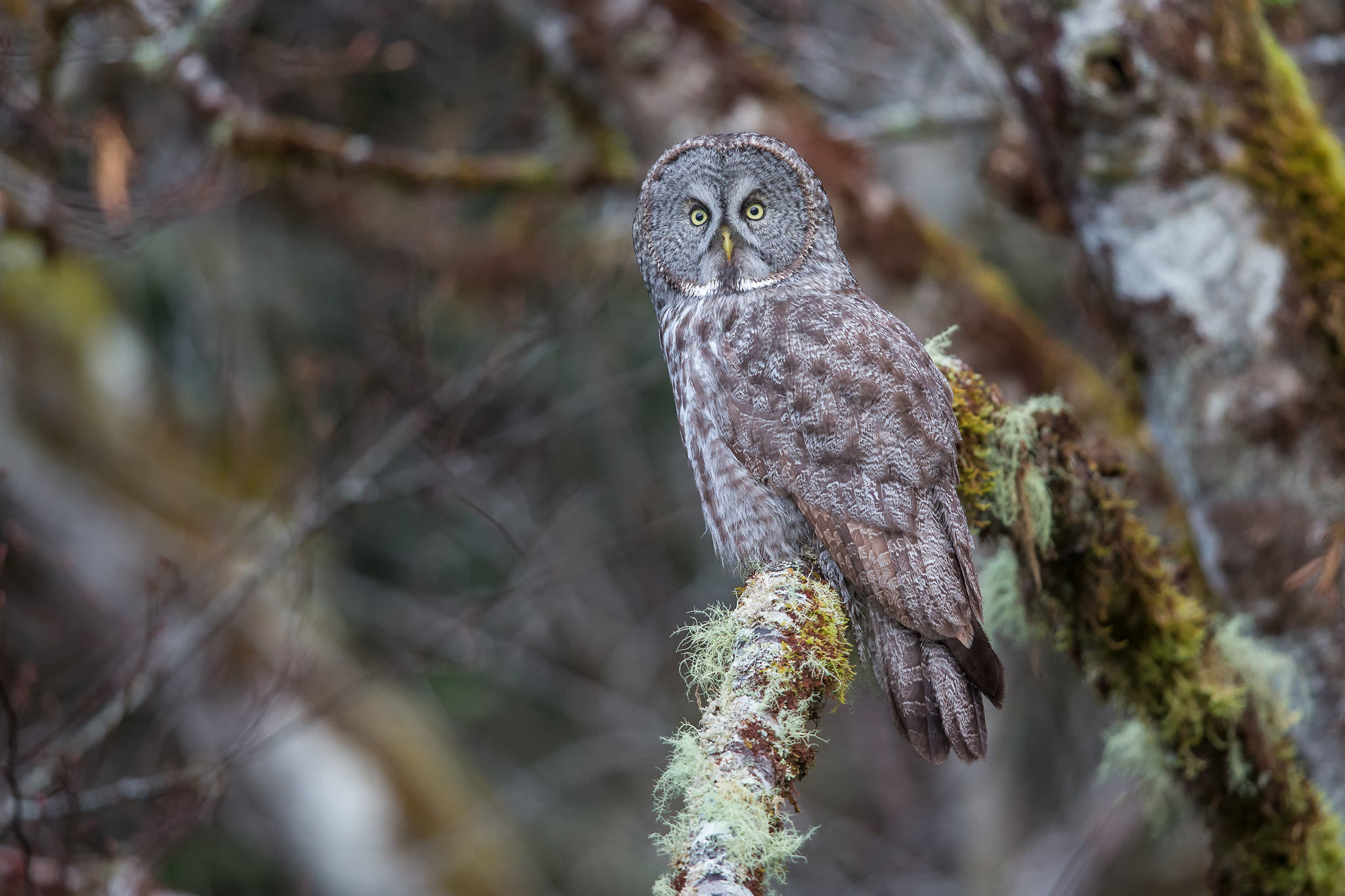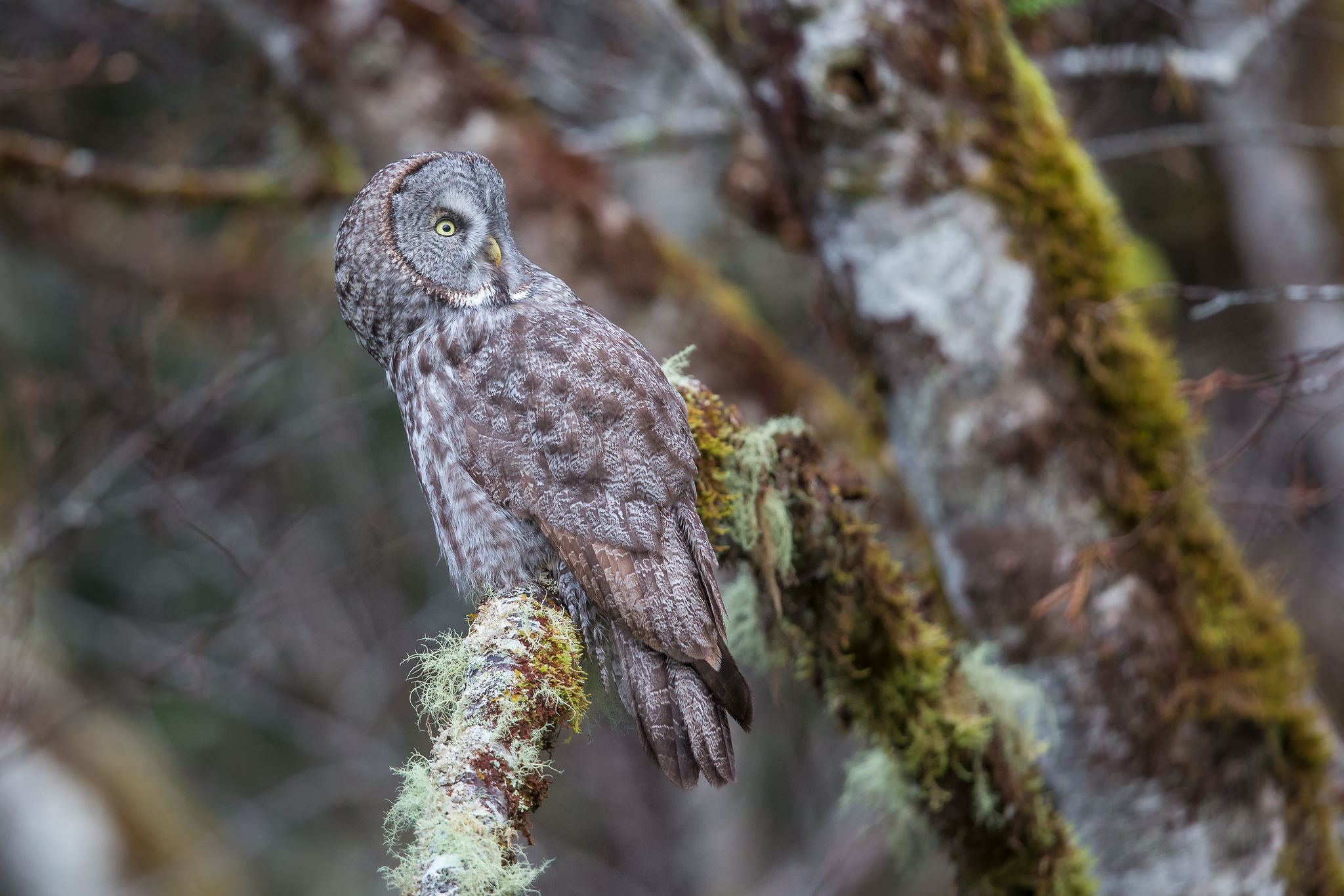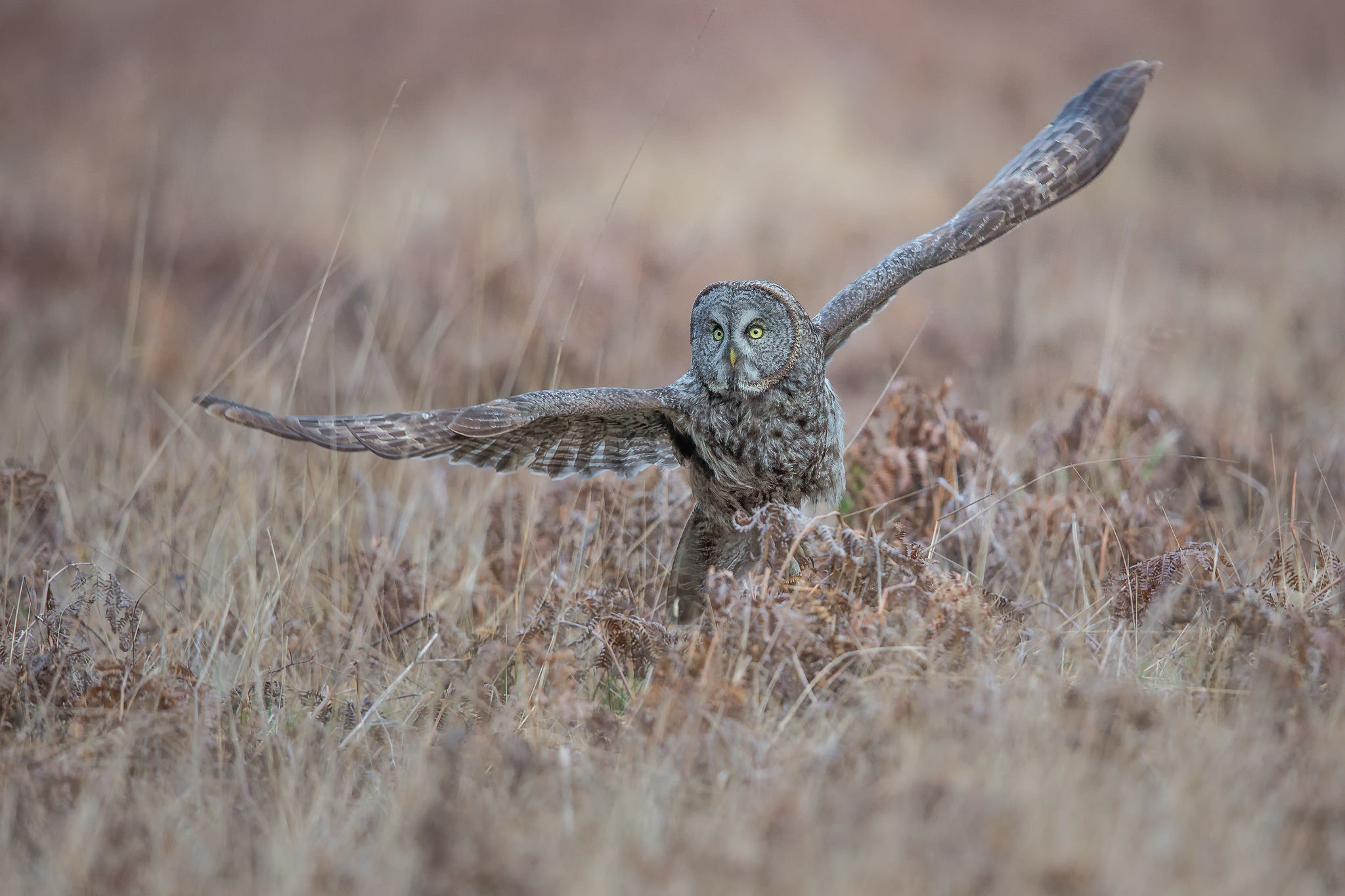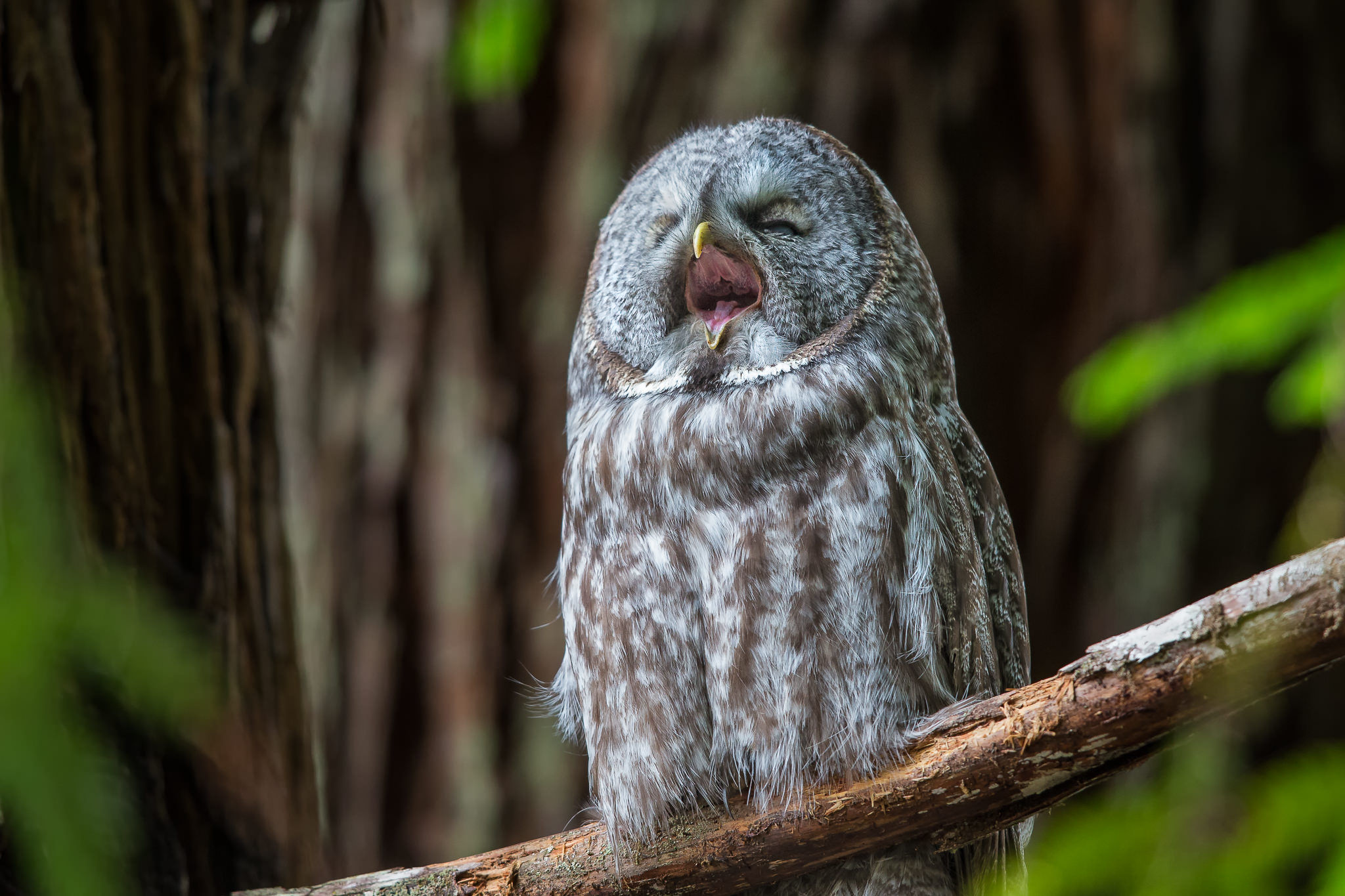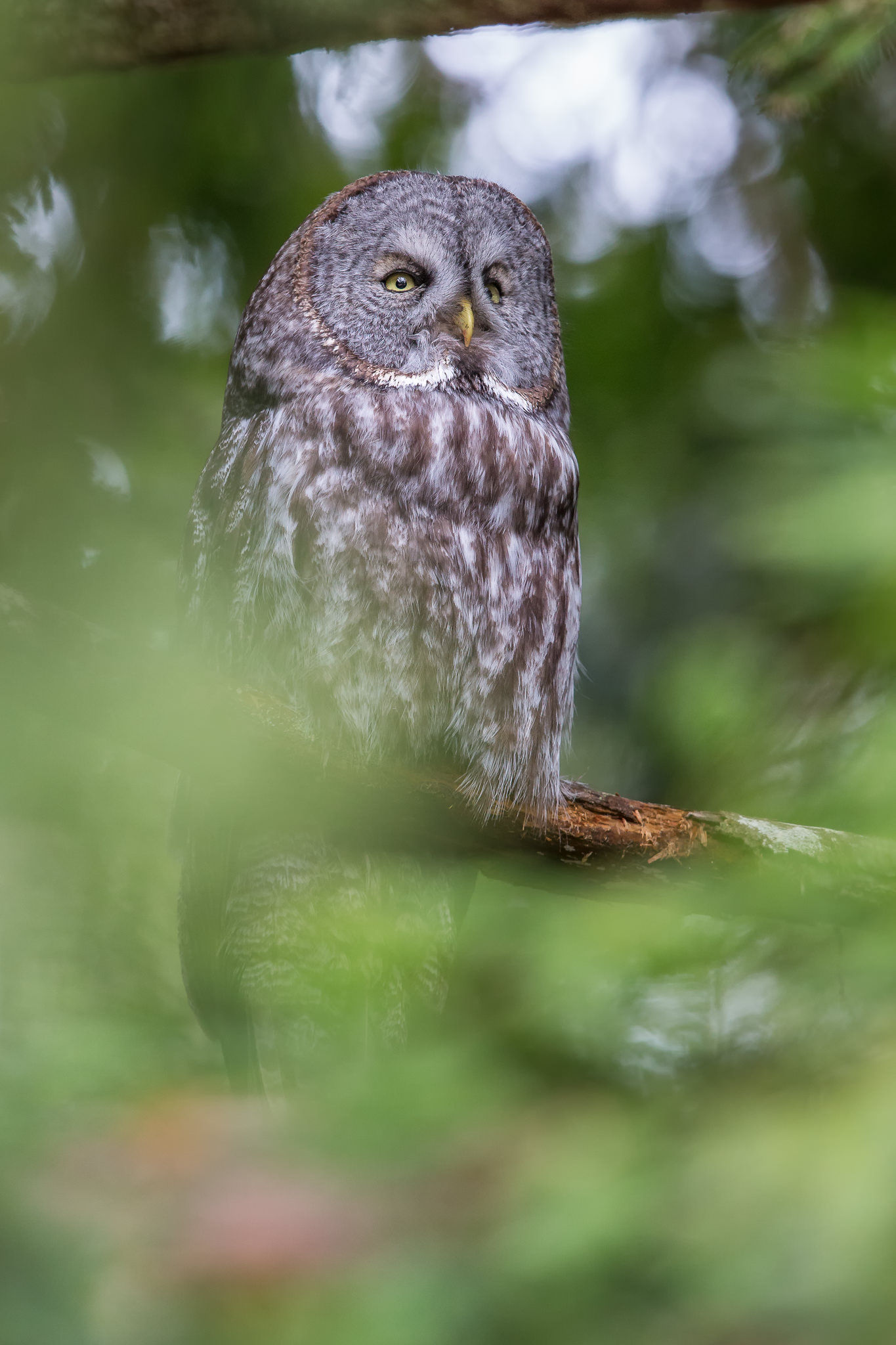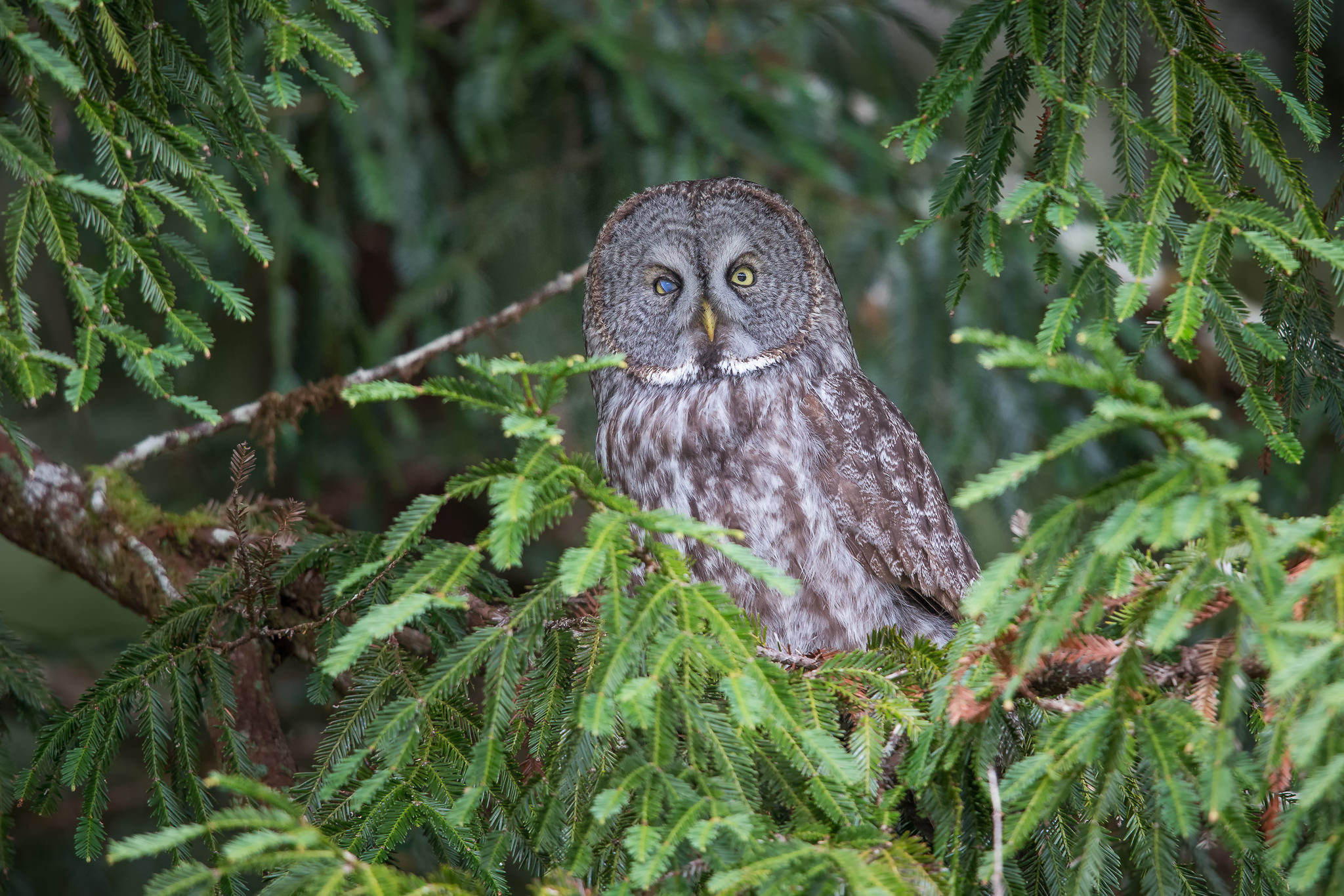Click HERE for a slideshow of the images.
The great grey owl or great gray owl (Strix nebulosa) is a very large owl, documented as the world’s largest species of owl by length. It is distributed across the Northern Hemisphere. In some areas it is also called Phantom of the North, cinereous owl, spectral owl, Lapland owl, spruce owl, bearded owl, and sooty owl.
Although the Great Gray Owl is the tallest American owl with the largest wingspan, it is just a ball of feathers. It preys on small mammals and has relatively small feet. Both the Great Horned and Snowy owls weigh half again as much, and have larger feet and talons.
Adults have a large rounded head with a grey face and yellow eyes with darker circles around them. The underparts are light with dark streaks; the upper parts are grey with pale bars. This owl does not have ear tufts and has the largest facial disc of any raptor.
In terms of length, the great grey owl is believed to exceed the Eurasian eagle-owl and the Blakiston’s fish owl as the world’s largest owl. The great grey is outweighed by those two species as well as several others, including most of the Bubo genus. Much of its size is deceptive, since this species’ fluffy feathers, large head and the longest tail of any extant owl obscure a body lighter than that of most other large owls. The length ranges from 61 to 84 cm (24 to 33 in), averaging 72 cm (28 in) for females and 67 cm (26 in) for males. The wingspan can exceed 152 cm (60 in), but averages 142 cm (56 in) for females and 140 cm (55 in) for males. The adult weight ranges from 580 to 1,900 g (1.28 to 4.19 lb), averaging 1,290 g (2.84 lb) for females and 1,000 g (2.2 lb) for males. The males are usually smaller than females, as with most owl species.
These birds wait, listen, and watch for prey, then swoop down; they also may fly low through open areas in search of prey. Their large facial disks, also known as “ruffs”, focus sound, and the asymmetrical placement of their ears assists them in locating prey, because of the lack of light during the late and early hours in which they hunt. On the nesting grounds, they mainly hunt at night and near dawn and dusk; at other times, they are active mostly during the night.
Source: wikipedia, allaboutbirds.org


